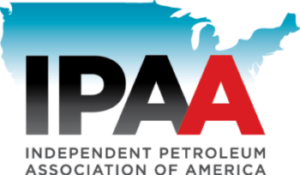Jan 20, 2015 Opinion: Greater Sage-Grouse Listing Wrong Choice for America’s Energy Future (Casper Star-Tribune)
“The Obama Administration should strongly consider…existing voluntary and state efforts in place to protect the Greater sage-grouse and our economies. A one-size-fits-all approach from Washington, D.C. is the wrong choice for this iconic species, the economy, and our secure energy future.”

Greater Sage-Grouse Listing Wrong Choice for America’s Energy Future
By Barry Russell, Independent Petroleum Association of America President
Casper Star-Tribune
January 17, 2015
In November 2014, the U.S. Fish and Wildlife Service listed the Gunnison sage–grouse, a bird that resides in sagebrush lands across Colorado and Utah, as threatened under the Endangered Species Act (ESA). Many landowners and involved stakeholders, who voluntarily implemented conservation measures on their property to protect the bird, were not only disappointed with the decision, but also fearful of what it could mean for future ESA listing decisions by the Obama Administration – especially as it relates to the Greater sage-grouse.
While the recently passed funding bill by Congress may mean some good news for the Greater sage-grouse – preventing the federal government from potentially listing the bird until after September 2015 – the debate over this iconic bird in the West is far from over.
A close relative of the Gunnison, the Greater sage-grouse occupies an eleven state range, including key oil and gas producing states such as Wyoming, Colorado, North Dakota, Nevada, and Utah. Needless to say, a federal listing decision would have an immense impact on energy development and the economic benefits that oil and natural gas provide for the region.
Here in Wyoming, a federal listing could also fuel unemployment in a still-struggling economy. According to a recent Wyoming Law Review article by attorney David Willms and economist Dr. Anne Alexander, listing the grouse could result in the loss of over 1,600 oil and gas jobs, nearly 4,000 indirect jobs, and $135 million in direct labor income. Over in Moffat County, Colorado, for example, where the grouse’s habitat occupies 75 percent of the county, the impact would also be devastating. As a recent report from Moffat County Commissioners highlights, the county sits atop nearly 73,000 billion cubic feet of natural gas, a resource base that could provide $13 billion in tax revenue, billions of additional dollars in state taxes and royalty payments, and a secure supply of clean-burning natural gas to heat millions of American homes.
A listing of the Greater sage-grouse would also impact existing state-based conservation measures for the bird, while simultaneously ignoring the great strides America’s energy industry has taken to reduce surface impacts. Thanks to the use of horizontal drilling, for example, oil and gas producers are now able to access energy reserves miles away from the well pad in various directions, greatly diminishing the number of wells required to produce the same amount of energy. According to a recent peer-reviewed report from researchers at Anadarko Petroleum, “new oil and gas development is being deployed at lower pad densities and should reduce impacts” on sage-grouse breeding ground.
Many companies in the region are also adapting equipment to mirror the surrounding environment, reducing the visual disturbance to the natural habitat, and consolidating their operations to limit surface disruptions. After operations are complete, oil and gas producers execute rigorous reclamation plans – ensuring the well pad area is restored to its original state. Some operators have also joined forces with state and federal agencies to improve Greater sage-grouse habitats and abide by existing state-based conservation plans, such as Wyoming’s Sage-Grouse Core Area Program and Colorado’s Greater Sage-grouse Conservation Plan.
In a recent meeting with U.S. Fish and Wildlife Service Director Dan Ashe, the Independent Petroleum Association of America highlighted the importance of state level conservation for the sage-grouse, ensuring the continued health of both the environment and western energy economy. While the recent funding bill may have bought more time, a future federal listing of this iconic species – a decision that would devalue state and local efforts to protect the bird while undermining the job-creating energy production that’s keeping America’s economy running – is still on the horizon. The Obama Administration should strongly consider these existing voluntary and state efforts in place to protect the Greater sage-grouse and our economies. A one-size-fits-all approach from Washington, D.C. is the wrong choice for this iconic species, the economy, and our secure energy future.
Barry Russell is the President and CEO of the Independent Petroleum Association of America, the leading, national upstream trade association representing oil and natural gas producers that drill 95 percent of the nation’s oil and natural gas wells. These companies account for 54 percent of America’s oil production, 85 percent of its natural gas production, and support more than 2.1 million American jobs.








